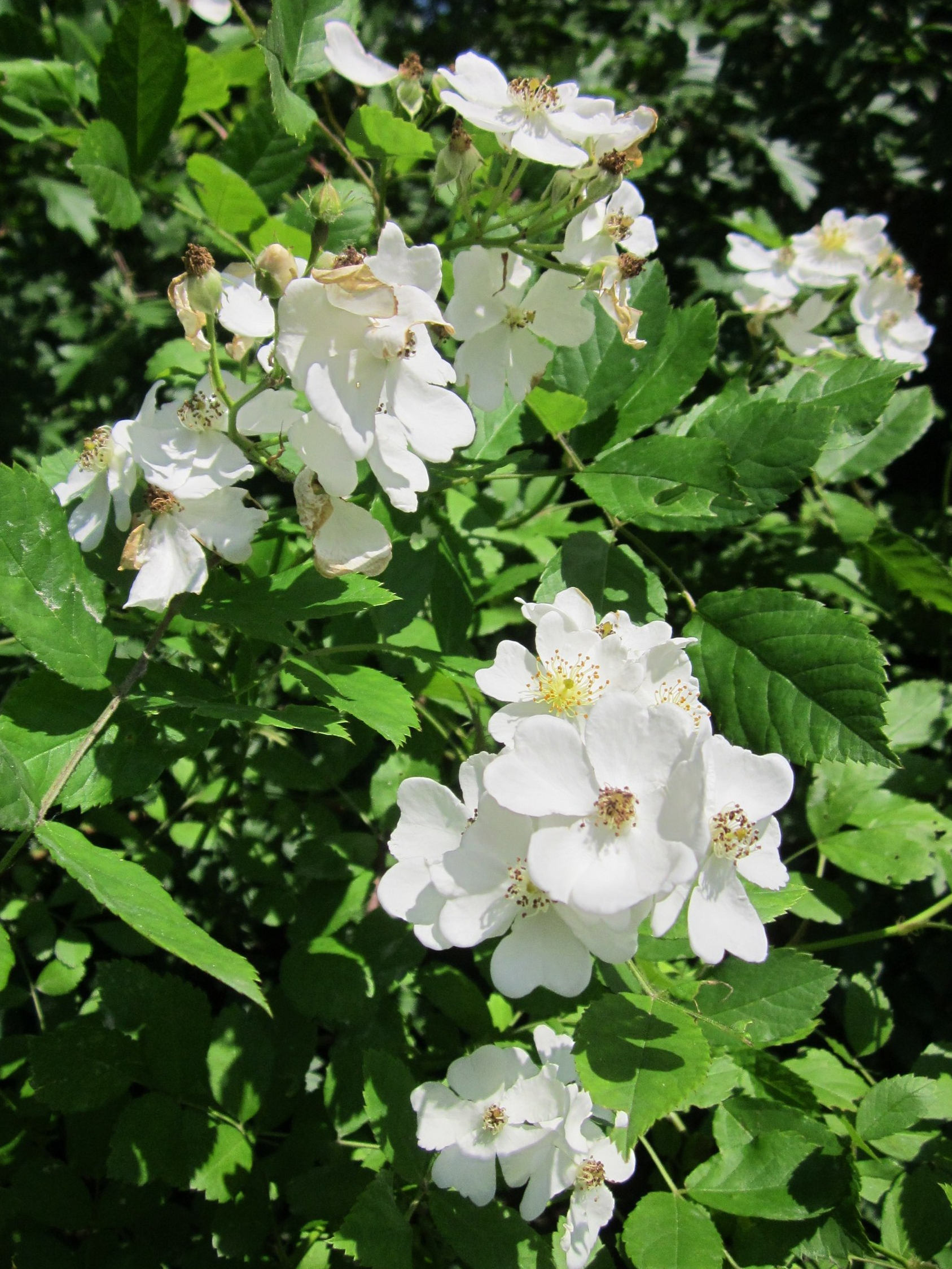Multiflora Rose
Multiflora Rose
Multiflora rose (Rosa multiflora) is native to Korea, China, and Japan and was brought to the U.S. for its ornamental value, erosion control, wildlife food and cover, as natural fences, and for highway median plantings as crash barriers. It has small, dark green, compound leaves that branch out from one central stalk, thorny, arching stems, white flowers, and orange rose hips. It spreads aggressively through seed dispersal by animals and by its growth habit, where branches touch and dig into the ground, then root out. This can lead to multiflora roses creating dense thickets that shade out and suppress the growth of native plants. The dense thickets can also impact recreational activities like hiking and hunting by making it difficult to navigate and enjoy natural areas because of its thorny and dense nature.
Keys To Success
For smaller infestations, digging around the base and removing as much of the roots as possible is effective. For larger plants and infestations, cutting and painting the stump with systemic herbicide manages multiflora rose. Cutting and painting helps treat the target plant and preserves desirable plants nearby. Treating multiflora rose stumps in the summer helps prevent the plants from developing more seeds, while treating them in the fall minimizes the harm done to other plants, since they will be dormant.


